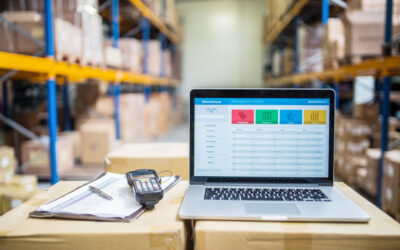In this guide:
- Asset Tracking for Mars Mission
- Why is Asset Tracking Important for Mars Mission?
- How Does Asset Tracking Software Help?
- Asset Tracking Software Features
- Asset Tagging
- Issue Reporting and Management
- Create and Export Configurable Reports
- Integrate itemit with Next Level Technology for Mars Operations
- All Transactions Powered by Dogecoin
- itemit: Track Assets on Mars
In this guide:
- Asset Tracking for Mars Mission
- Why is Asset Tracking Important for Mars Mission?
- How Does Asset Tracking Software Help?
- Asset Tracking Software Features
- Asset Tagging
- Issue Reporting and Management
- Create and Export Configurable Reports
- Integrate itemit with Next Level Technology for Mars Operations
- All Transactions Powered by Dogecoin
- itemit: Track Assets on Mars
For a mission as ambitious as making humanity multi-planetary, the challenges are many. But this gigantic venture is the brainchild of Elon Musk, a person known for overcoming challenges and accomplishing great feats.
Be it revolutionising space travel or propelling electric transportation to the heights it has reached today, the innovative entrepreneur is known for going against all odds. And so, landing on planet Mars, despite the obstacles, seems to be within his reach.
As experts have put it, Musk’s astonishing mission to colonise Mars demands swiftness and agility. SpaceX would need to focus on lightning-fast decision-making, learning from mistakes, overcoming hurdles and developing engineering technology in real-time to manage a Mars landing in projected time. Talking about challenges, successful asset management on this pioneering voyage is one of the many tasks confronting SpaceX.
This blog post talks about how the mission to colonise Mars and space travel, in general, need an efficient way to track and manage all sorts of assets involved. We’ll go over the importance of asset tracking, how it can be streamlined and made as advanced as it needs to be to successfully operate on another planet and more.
Asset tracking on Mars would be a big task in itself. This is because there are quite a few hindrances like the absence of GPS tracking abilities, the Red Planet’s dusty environment rendering barcode and QR code scanning redundant, internet connectivity issues and space constraints. Not to mention, the need for real-time information being shared across users to speed up operations and maximise resource utilisation.
Buckle in and prepare yourself for an interesting read.
Mars, Here We Come!
Asset Tracking for Mars Mission
Before we get into the ‘why’ of it, let’s briefly go over the ‘what’ of it for better understanding. So, here’s a guide to asset tracking.
Also known as asset management, it’s how you organise and keep a track of all physical items you own or need to keep an eye on. It’s just like inventory management, but here you’re managing the assets you use. When it comes to space travel, there’s a wide range of assets travelling onboard a spacecraft. This includes but is not limited to the following:
- Crew provisions including clothing and hygiene packages
- Food provisions
- Personal sundry
- Daily operations tools and equipment
- IT assets
- Medical equipment
- Fuels and propellants
- Construction materials
- Spacecraft spare parts
- Tools and equipment
- Mission-specific installations
- Oxygen tanks
- Specimen from Mars
That’s quite a list, and it’s not exhaustive. Personnel on board the spacecraft and back here on Earth need a platform to track all of these assets and everything else that needs to be kept track of. Asset tracking involves keeping a record of all items of relevance. This way, astronauts will not have to rely on memory to make sure everything is in order.
You can think of it as moving your house, just that you’re moving from the Earth to Mars. Like you need to keep a record of all your personal property, boxes and furniture to make sure nothing goes missing while you’re moving, asset tracking helps teams be certain of what items they have, where they are and every other important detail.

Why is Asset Tracking Important for Mars Mission?
The event of a successful Mars landing would be the first step into a much bigger venture, and SpaceX will have to make it count. This would involve getting as many assets aboard the Starship for transportation and installation on the red planet. The list of assets we’ve mentioned above is only a general overview of the different sorts of items, tools and equipment involved. The actual list would be much more extensive.
The difficulties in storing, packing, identifying and organising these assets to be transported to Mars are a few of the many challenges SpaceX has to solve on the go. Over the years, asset management has turned out to be a major logistical hurdle confronting space exploration programs.
For instance, the International Space Station (ISS) program has experienced complications in predicting spare part requirements, storing and tracking tools and equipment, and acquiring solid data on asset utilisation to make appropriate predictions to deliver required crew provisions. An MIT study on the future of asset management for human space exploration claims that these difficulties will be even more pronounced for space ventures going beyond low Earth orbit. It’s evident from past experiences that successful space exploration programs are not possible without the right asset tracking tools.
The complications are not just limited to the transit phase of SpaceX’s Mars mission. Once landed on Mars, we need to find a way to maximise the utility of assets. Now that we’re not on Mother Earth, things can get really tough if we don’t make the most out of every resource available. Everything from expiring food, to assets in need to maintenance, the Mars team will have to be on its toes at all times to maximise resource utility.
All of this seems like quite the test. Managing assets on Mars along with the numerous other challenges faced by Mr Musk’s mission might seem too much to handle. But technology and innovation make everything easier. Asset tracking software is a specimen of functional software engineering that makes things much simpler, turning a seemingly difficult task into something quite fun and manageable.

How Does Asset Tracking Software Help?
Asset tracking software is a smart and efficient tool to track all of the assets you need in a streamlined, time-saving and effortless manner. With an easy-to-use, intuitive interface it’s a mobile or desktop application that lets you add, edit, and view essential details about your assets.
Each asset’s identity and details are stored neatly in respective asset profiles. These asset profiles are kept in an online database and can be accessed by authorised personnel from anywhere. This means that the asset tracking software can be used at the same time on both Earth and Mars.
When it comes to space exploration, one of the most common asset management problems is that the asset information for different departments, like food, crew provisions or equipment are stored on different databases. Switching between different databases to manage different items can be hectic. itemit’s asset management software provides an all-in-one platform to track all assets in one place. It lets you organise asset profiles into categories so you can maintain a high level of organisation while keeping things simple and easy.
Asset Tracking Software Features
itemit’s asset tracking software is equipped with a range of powerful features that would make life easy both for the team of astronauts on Mars and the logistics team back here on Earth. In this section, we’ll talk about some of the most useful elements that can help SpaceX streamline asset management for the Mars mission and live up to the trial.
Asset Tagging
Asset tags are the very core of efficient asset management. itemit lets teams assign a unique digital identity to each of their assets with labels that connect each physical item to its digital profile. These can either be QR code stickers or RFID tags. You can use different types of asset tags on different assets as needed.
The best part is that itemit’s software solution lets you combine a range of tracking technologies in the same register. This means you can track some assets with QR code stickers and others with RFID tags at the same time, and manage them all from the same platform.
QR code stickers are best for low-value items that you want to assign a unique identity in the asset database. These can be identical spare parts that you want to differentiate from each other or similar-looking communication devices that shouldn’t be mixed up. They can be scanned with a smartphone camera and the asset tracking software will automatically take you to the respective asset profile.
RFID tags are perfect for a higher level of automation. These can be attached inconspicuously to assets and don’t need to be in a direct line of sight to be scanned. With fixed RFID scanners, the software automatically logs the presence of an asset in a location without human interference. This will be useful when transporting assets between different compartments of spacecraft or Mars settlements.
Issue Reporting and Management
Issue reporting and management are critical in interplanetary operations. itemit asset tracking software lets users report an issue as soon as they discover one. All they have to do is simply scan the asset tag and tap on ‘Report issue.’ This instantly notifies relevant team members no matter where they are.
With itemit, you don’t have to go around communicating the issue on different platforms to reach all the relevant people. The software automatically notifies everyone who has access to the asset register instantly. This way, the team of astronauts can easily collaborate with the engineering team back on Earth and get issues resolved smoothly.
Create and Export Configurable Reports
As mentioned before, the inability to source solid data on asset usage made it really difficult for the ISS program to predict future asset requirements. itemit solves this by recording asset utilisation data and letting you create and export configurable reports.
This feature comes in handy when you have to project requirements for different kinds of items ranging from food provisions to personal sundry. itemit can help space exploration teams ensure they are supplied with adequate supplies in the long run.
Integrate itemit with Next Level Technology for Mars Operations
It’s worthwhile to consider that while the primary motives for asset tracking on Mars are the same as those for asset tracking on Earth, the means and methods used may not be the same. Asset tracking software can be integrated with cutting-edge technology to develop an ideal management solution for a mission as advanced as Mars colonisation.
At the moment, there is no asset tracking app on Earth that could be used on Mars as-is. There are quite a few adaptations we need to make. For instance:
- Internet connectivity: Would the Mars colony have the same sort of internet connectivity we have here? How long would it take for data to be transmitted between Mars and Earth?
- Communication gap: Will asset tracking on the Red Planet really be in real-time given the communication gap presented by connectivity issues between the two planets?
Asset management on Mars doesn’t have to be constrained by Earth technology. itemit offers a versatile solution that can easily integrate with more advanced technological components. A fully automated asset management program is very much a possibility. The software solution already offers AI-powered image recognition. It can, for instance, collaborate with a Tesla bot that can recognise, move and conduct basic functions on assets on its own.
All Transactions Powered by Dogecoin
The possibilities are truly endless. We wouldn’t possibly be using old-age Fiat currencies to finance all these new-world operations. Using Dogecoin is very much a viable option. But how do we get the Dogechain or any other blockchain to work on Mars?
Cryptocurrency transactions require internet connectivity to immediately register every transaction back into the blockchain. Would we be able to use the same blockchains on Mars as we do on Earth? Alternatively, Mars can have its own blockchain and its own cryptocurrency. Marscoin?
But cryptocurrency is not the only blockchain application that could come in handy for our colony on Mars. Authentic asset records can be created using the Dogechain in case we need a safe place to secure sensitive information regarding SpaceX’s mission Mars.
Elon is known for talking about pretty sophisticated things in the way someone would talk about a video game. But that’s really who he is. He created a space-shooting video game when he was 12. And now, he’s developing real spacecraft that can go as far as Mars, and who knows, beyond! If someone says asset tracking on Mars is nothing more than a gamer fantasy, let them know that there are people who know how to turn video games into reality.

itemit: Track Assets on Mars
Not many dare to dream big. But great achievements are made only by those who do. Here at itemit, we aim to take asset tracking higher than ever. (Both physically and metaphorically)
Our team strives to deliver a bespoke asset tracking solution for you no matter what kind of business you’re in. Whether you work in construction or are looking to build a colony on Mars, we have what you need to make life easy for yourself and your team.
To find more about how itemit can help you, get in touch with our team at team@itemit.com. You can also fill in the form below to start your 14-day free trial.
Tracking Assets On Planet Mars
Choose a better way to track your assets
Start your free 14-day trial now
Instant access. No credit card details required.
You can also start your 14-day free trial by filling out the form below, or you can contact us at team@itemit.com or at 01223 421611.
Or, you can check out these blogs:
What Are the Best Asset Management Tracking Tools?
3 Ways Fixed Asset Tracking Software Saves you Time and Money
How to Track Maintenance with Heavy Equipment Maintenance Software
Latest posts
itemit Blog
Tips, guides, industry best practices, and news.
Latest posts
itemit Blog
Tips, guides, industry best practices, and news.
Related articles
How to Optimise Product Inventory Management
Learn how to optimize product inventory management with effective strategies, a product inventory management system, and best practices for efficiency.
Buffer Stock in Inventory Management: How It Optimizes Supply Chain Efficiency
Learn the meaning of buffer stock, its role in inventory management, and how it optimizes supply chains. Explore strategies and tools for effective stock management.
What Is an Online Inventory Management System?
Discover what an online inventory management system is, how it works, and why it’s essential for efficient inventory tracking and business success.


